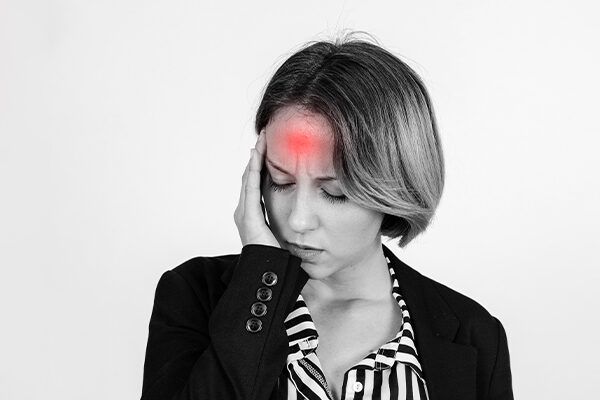Last Updated on December 3, 2024
But what happens when this silent force is damaged?
In this blog, we’ll take you on a journey through the fascinating world of lung parenchyma, what it is, why it matters, what can harm it, and how conditions like COPD affect it. Let’s dive in!
The Role of Lung Parenchyma: A Breath of Life
Think of your lungs as a high-tech air processing plant, and lung parenchyma is the central machinery. This delicate yet powerful tissue houses tiny air sacs (alveoli) where oxygen and carbon dioxide exchange occur. It’s the heart of what keeps you alive.
Without pulmonary parenchyma, breathing becomes a struggle, and oxygen delivery to the bloodstream falters. This is why its health is paramount for your well-being.
What Makes Lung Parenchyma So Unique?
Here are a few things you might not know about this incredible tissue:
- Elasticity is Everything: The lung parenchyma relies on its ability to stretch and contract effortlessly. This elasticity allows your lungs to expand as you breathe in and relax as you breathe out.
- Microscopic Miracle Workers: The alveoli in the parenchyma are so tiny that they can only be seen under a microscope. Yet, their impact is monumental, they ensure oxygen flows into your bloodstream and carbon dioxide exits your body.
- Silent Yet Vital: Unlike your heart, parenchyma does not grab your attention until something goes wrong. Its quiet efficiency is easy to take for granted.
The Culprits: What Causes Lung Parenchyma Damage?
The pulmonary parenchyma is not invincible. Over time, exposure to harmful substances or conditions can lead to its deterioration. Let’s uncover what causes lung parenchyma damage:
- Smoking: The top culprit. Cigarette toxins destroy alveoli and weaken parenchyma.
- Pollutants: Industrial fumes, chemicals, and airborne particles wreak havoc on lung tissue.
- Chronic Infections: Recurring respiratory infections can weaken parenchyma.
- Autoimmune Disorders: Conditions like lupus or rheumatoid arthritis may inflame lung tissue.
- Genetics: Some people are predisposed to lung conditions like alpha-1 antitrypsin deficiency, which can harm parenchyma.
Recognizing and avoiding these triggers is the first step in safeguarding your pulmonary health.
When Things Go Wrong: The Impact of Pulmonary Parenchyma Damage
Imagine a rubber band stretched too many times, it eventually loses its elasticity. That’s what happens when the pulmonary parenchyma is damaged.
Here’s how it can affect you:
- Breathing Difficulties: Shortness of breath, even with minimal activity.
- Chronic Coughing: A persistent, irritating cough that doesn’t go away.
- Frequent Infections: Weakened lung tissue is more prone to infections.
- Reduced Lung Function: Everyday tasks like climbing stairs or walking can feel overwhelming.
Protecting Your Lung Parenchyma: Small Steps, Big Impact
You do not have to wait until something goes wrong to care for your lung parenchyma. Here’s how you can support this vital tissue every day:
- Quit Smoking: Smoking is the single most damaging habit for your lungs. If you smoke, quitting is the best gift you can give to your parenchyma.
- Create a Cleaner Environment: Use air purifiers, avoid exposure to harmful fumes, and wear protective masks in polluted areas.
- Stay Active: Exercise keeps your lungs strong and improves their efficiency. Activities like swimming, walking, or yoga are great for lung health.
- Stay Vaccinated: Protect yourself from respiratory infections with flu and pneumonia vaccines.
- Eat for Your Lungs: Incorporate anti-inflammatory foods like leafy greens, berries, and omega-3s into your diet to support lung repair and reduce inflammation.
Spotlight: How COPD Affects Pulmonary Parenchyma
COPD, or Chronic Obstructive Pulmonary Disease, is a condition that directly targets the pulmonary parenchyma, causing it to lose its elasticity and functionality. Over time, COPD leads to:
- Hyperinflation of Lungs: The lungs remain partially inflated, making it hard to exhale fully.
- Reduced Gas Exchange: Oxygen struggles to enter the bloodstream, leaving you breathless.
The damage caused by COPD is often irreversible, but it can be managed with proper care.
A Path Forward: The Role of COPD Clinical Trials
For those living with COPD, hope lies in research. COPD clinical trials are at the forefront of exploring new therapies to protect and restore pulmonary parenchyma.
By participating in COPD clinical research, individuals gain access to potential treatments, such as:
- Advanced medications targeting inflammation and elasticity.
- Therapies that improve lung capacity and ease symptoms.
- Advanced rehabilitation programs for better lung health.
Clinical trials not only offer potential solutions for participants but also contribute to advancements in respiratory care for millions.
In a Nutshell
Lung parenchyma works tirelessly behind the scenes, ensuring every breath fills the body with life-sustaining oxygen. Its role is so vital that when it’s compromised, the impact is felt throughout your body, from difficulty breathing to reduced energy for daily activities.
While parenchyma is remarkably efficient, it’s not invincible. Factors like smoking, pollutants, and chronic conditions such as COPD can damage this critical tissue, highlighting the need for proactive care.
Protecting your lungs is not just about quitting harmful habits; it’s about building a lifestyle that promotes respiratory health. Whether it’s staying active, eating a balanced diet, or exploring advanced options like COPD clinical trials, small steps can make a significant difference.
By understanding and supporting pulmonary health, you not only enhance your quality of life but also contribute to a future where lung conditions are better managed or even prevented. Remember, every breath is a testament to the incredible work of your lungs, so let’s give them the care they deserve.





